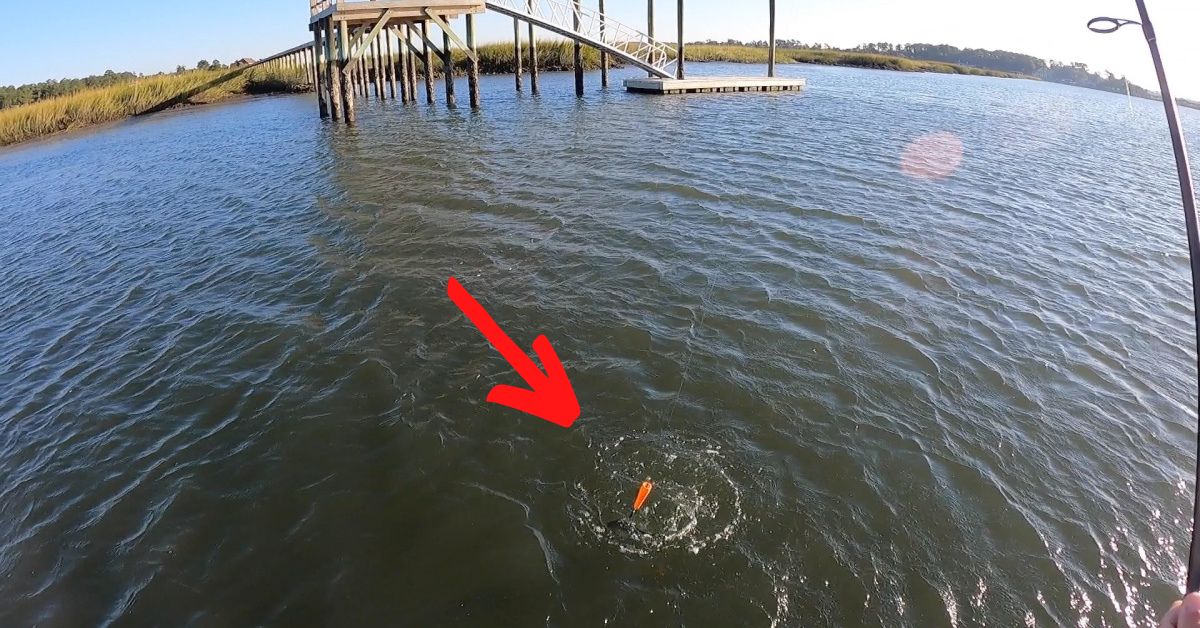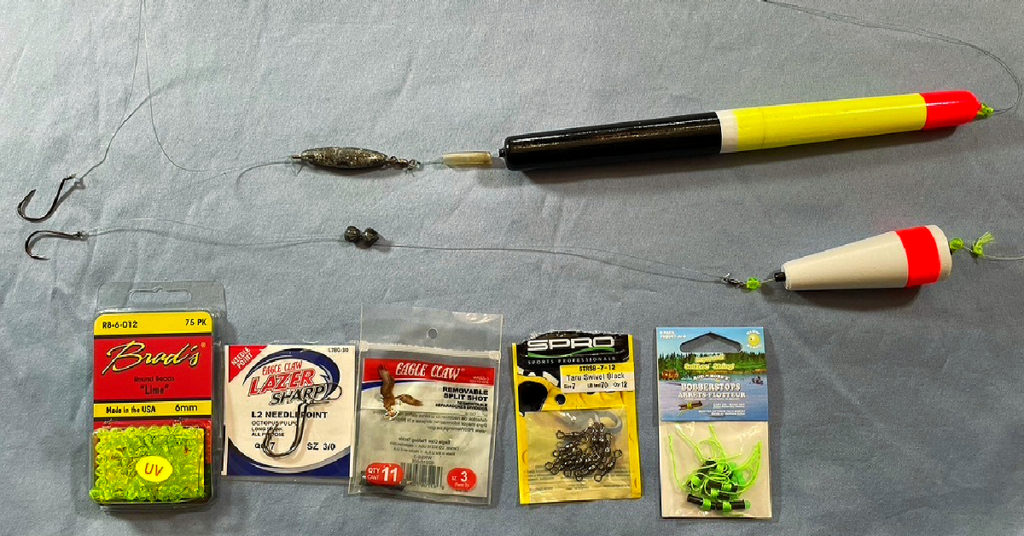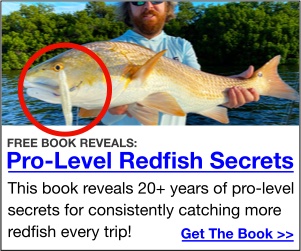Everything You Need To Know About Slip Float Rigs
- By: Richard Thomas
- on

Here’s everything about slip float rigs!!!
I’ll show you the right gear you need, how to rig them, and the best retrieves.
Take a look below!!
Everything About Slip Float Rigs [VIDEO]


Featured Equipment:
What Is A Slip Float?
It is NOT a popping cork!!
The reason for that can be found in the name, the float “slips” up and down your mainline.
Slip floats allow you to fish at a different variable depth of where you want your presentation.
Entire System Top To Bottom
Starting at the very top is your main line that leads into the super important Nail Knot.
The Nail Knot stops the float from going all the way up your line and that also can be slid up or down the line to change the amount of freedom the float has to move.
A small glass bead will stop the float from hitting the knot.
Then comes the float and leader line moving into the swivel weight and finally your hook.
You can adjust the depth you’re fishing at any time of the day with a slip float rig.
Why You Would Want To Fish With A Slip Float
Especially during this time of the year, fish are actively hunting at different depths in the water column.
For trout, you might stay in the middle of the water column and if you’re targeting redfish, you’ll tend to fish closer to the bottom.
You can adjust where you’re bait will be based on the nail knot placement.
On a recent fishing trip, I noticed the fish were feeding but hanging slightly deeper than normal in about 15 feet of water.
So I adjusted the nail knot to sit at about 8 feet, directly in the strike zone.
I was fishing with live shrimp so, with a simple adjustment of the nail knot, my shrimp was right in the strike zone.
If you are fishing with someone else, then you can really cover ground and cover different depths effectively.
You’ll know at what depth those fish are holding very quickly.
Also, as long as you know the depth, you can avoid getting snagged in bottom structure.
Where To Use Slip Floats & Retrieves
Additionally, slip floats move with the current so you don’t have to impart any more action on it.
Instead, you do what’s called a “Dead Drift” and just let the float drift with the current.
Be sure not to put any added tension on your line so the bait appears natural.
A spot to make note of when fishing with slip floats is around deepwater docks, especially in high current areas.
Sometimes, its actually harder to get a better presentation with an artificial lure.
That is easily solved with a slip float.
Once you dial in on where the fish are staged, you’ll reel them in one after the other.
All The Gear You Need
First and most importantly, you need an unweighted saltwater slip float.
There are weighted options out there but I recommend going with the unweighted and adding weight if needed.
The rod for this system is the TFO Professional 7′ Medium power rod.
I prefer the stiffness of the Medium power rod when fishing with a slip float.
The Medium TFO is heavier than a typical Medium rod on the market.
I have this paired up with the Daiwa BG MQ 3000 reel.
The BG MQ is a tank and just about everyone on our team uses this reel.
This rod and reel combo is also excellent for switching over to artificial lures later in the day.
If you feel you need to or want to make a switch, you can cut and retie all on the same outfit.
Because we are fishing around structure and docks, I went with 15lb braid on this system.
You don’t have a long leader line when fishing with slip floats so just a little bit more strength in the line will help you pull fish out from tight areas.
As far as leader goes, 20lb Ande Monofilament is the go-to for me on this setup.
Hook sizes will depend on the size of the bait you’re using.
Typically, I use a 1/0 hook to a 3/0 hook but it will all depend on the size of the bait.
Conclusion

Slip floats are one of the best and easiest ways to have direct control of the depth of your baits.
With a simple adjustment of the nail knot, you can be sure you’re presentations are in the strike zone.
Check this out for a more detailed walkthrough of how to rig a slip float!
What other kinds of questions do you have about slip floats?
Is this something you think would work in your area?
Let us know down below!!
If you know someone who wants to learn everything about slip float rigs, please TAG or SHARE this with them!
Oh, and if you Join the Insider Club TODAY, Smart Fishing Spots is absolutely FREE! Click here to join us in the Insider Club!
Related Articles:
Related categories:
STOP WASTING TIME ON THE WATER!
Do what the “SMART ANGLERS” are doing and join the Insider Club.
Here’s what you’ll receive today when you join:
- Weekly fishing reports and TRENDS revealing exactly where you should fish ever trip
- Weekly “spot dissection” videos that walk you through all the best spots in your area
- Exclusive fishing tips from the PROS you can’t find anywhere else
- Everything you need to start catching fish more consistently (regardless if you fish out of a boat, kayak, or land).
STOP WASTING TIME ON THE WATER!
Do what the “SMART ANGLERS” are doing and join the Insider Club.
Here’s what you’ll receive today when you join:
- Weekly fishing reports and TRENDS revealing exactly where you should fish every trip
- Weekly “spot dissection” videos that walk you through all the best spots in your area
- Exclusive fishing tips from the PROS you can’t find anywhere else
- Everything you need to start catching fish more consistently (regardless if you fish out of a boat, kayak, or land).











Thanks for doing this video and sharing this info. Good stuff and something I’ve never utilized in 50 years of fishin’. Thanks again.
Anytime Matt! Let me know how it works if you try it!
Great tutorial. I’ve used the slip corks in the past to adjust my depth, but this looks way easier to cast and control. Can you use circle hooks with this set up? Cheers!
Hey Marc, you can but I’d recommend a octopus hook or a khale hook. That design works a bit better for setting the hook, which you will need to do this quickly once that cork goes down!
Really cool set up! I’ve seen them but never used one. Now I know how to rig it. Thanks for showing this!
Now you’ve seen it in action! Haha
Amazon sells these little plastic bobber stops that attach to your line and adjust easily. Have you tried them? I think they work great. For $12 you get a large supply.
Thanks for sharing Gene! I have seen them, I do prefer the yarn/braid as a nail knot the best as a personal preference, but I know they work great!
Thanks for the info Richard.
Do you suggest a particular product for a slip cork? Do certain color combos work better in specific regions?
Anytime Robert.
There are a lot of good brands out there- a inexpensive but effective one is the H&H non-weighted saltwater cork.
I think orange shows up the best in darker/stained water like I have and the fish don’t seem to mind the color, so whatever you can see the best is what I’d use!
What knots are using on the weight and hook
Hey Ralph I’m using the improved clinch knot on all points. Very strong and easy to tie quickly
If you are fishing from the pier or dock and do not have a fish finder, how deep do you know to put the bait?
Good question Matt, so typically what I do is guess the depth and move my slip knot way up the line until I hit bottom. Then I make a couple drifts before I move the bait higher in the water column
Great video thank you for sharing this information with use.
Absolutely James! It’s definitely one of my favorite rigs to use for good reason.
Great video!
Appreciate it Will!
Awesome. Really good information. Learning a lot from this club thanks.
Awesome Mike! I’m glad it helped!